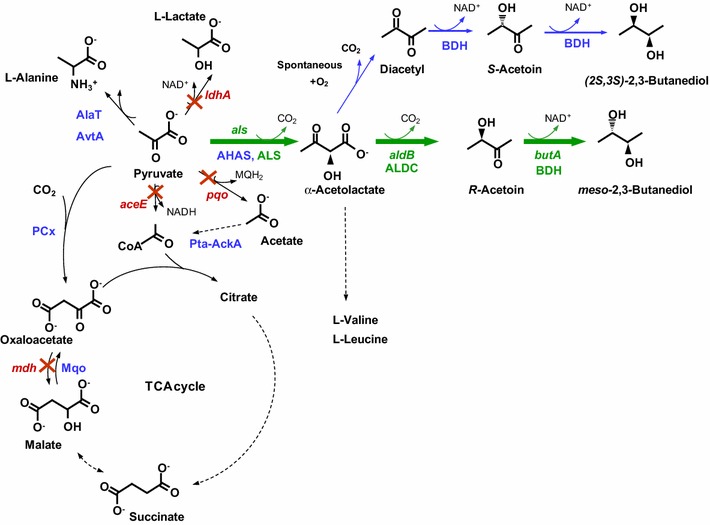Fig. 1.

A scheme depicting major pyruvate consuming reactions, including the proposed pathway for synthesis of optically active 2,3-BD in C. glutamicum and the strategy for engineering meso-2,3-BD synthesis. L. lactis genes of the 2,3-BD biosynthetic pathway (green) were introduced into C. glutamicum. Endogenous genes of interest are presented in blue; the red cross marks indicate genes that were inactivated in host strains to prevent the production of lactic acid (ldhA) and acetic acid (aceE and pqo); suppression of succinic acid was attempted by deletion of mdh. mdh, malate dehydrogenase gene; mqo, malate:quinone oxidoreductase gene; ALS, α-acetolactate synthase (encoded by als); ALDC, α-acetolactate decarboxylase (encoded by aldB); BDH, butanediol dehydrogenase (encoded by butA), AHAS, acetohydroxyacid synthase; LDH, lactate dehydrogenase (encoded by ldhA); PQO, pyruvate:quinone oxidoreductase (encoded by pqo); AlaT, alanine-glutamate transaminase; AvtA, alanine-valine transaminase; AceE, E1-subunit of the pyruvate dehydrogenase complex (encoded by aceE); Pta-Ack, phosphotransacetylase and acetate kinase; PCx, pyruvate carboxylase
